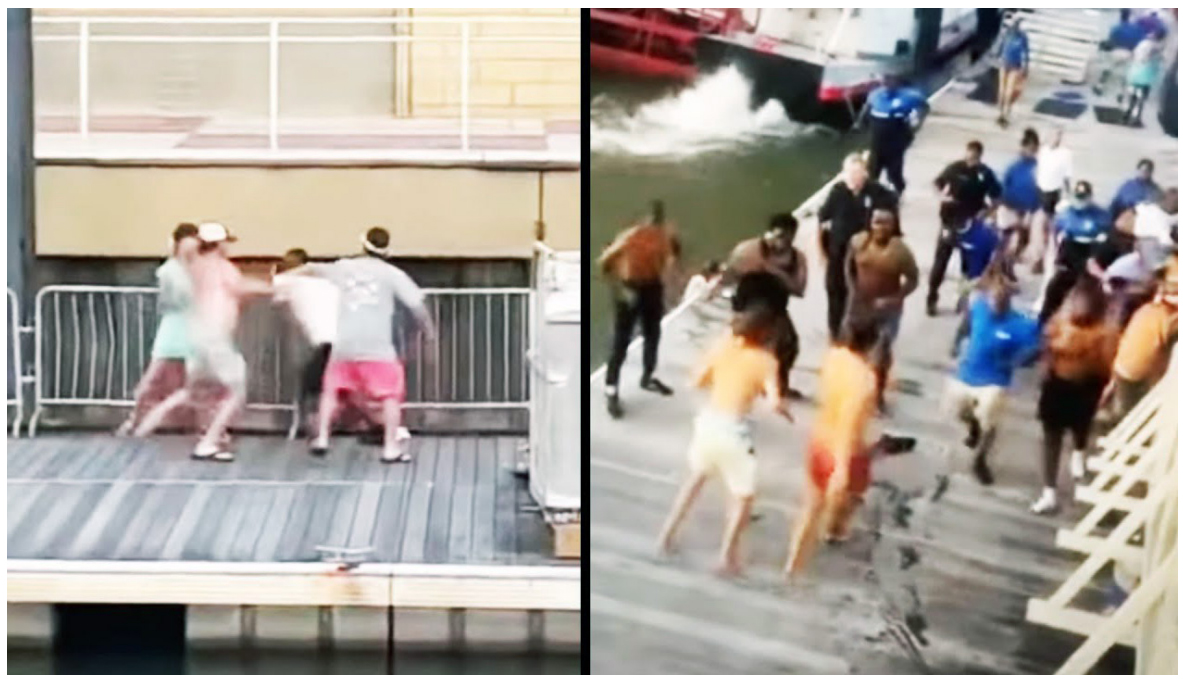The Montgomery Brawl III: Who Are We And Who Do We Want To Be

Disclaimer: The views and opinions expressed in this article are those of the author and do not necessarily reflect the editors' views or any agency, organization, or employer. Based on my experience, research and knowledge, my statements are in good faith and are only for information purposes. Please research and follow up on all claims for yourself.
This week, I am continuing a series on the Montgomery Brawl. Let me recap: On Saturday, August 5th, at a riverfront in Montgomery, Alabama, a fight erupted between a group of White people who refused to move their boat and some Black people who were on a riverboat. After more than 30 minutes of asking the boaters to move their boat from the unauthorized area on the Riverfront, the Black co-captain of the riverboat, who was attempting to park, approached the dock to move the boat. The situation escalated when a group of White individuals physically attacked and assaulted the Black cocaptain of the riverboat. This prompted a defensive response from a larger group of Black people who were on the riverboat and had witnessed the altercation. Upon docking the riverboat, some of the Black passengers became involved in a physical altercation with the White boaters. The optics of the incident suggest a division along racial identity lines.
Last week, I shared my thoughts about the Montgomery Brawl as it relates to Newton's laws of motion and reaction. Today, I want to look at the brawl from a slightly different context. I want to explore the subtle undertones of race, place, and history, along with the visual image of racial divide, and the eruption of celebratory messages, social media posts, memes, etc. I will then look at how interpretations of these reactions and celebrations could be misunderstood and used to construct an even more divisive narrative moving forward. As we prepare for this election cycle, as Americans, it's important that all of us reflect on who we are and who we want to be.
Historically, societal, class, and racial issues have always challenged Americans. For some, morals, virtues, and the ability to see fairness and equity are often blocked when racial dynamics come into play. For instance, a fight between two White people is just a dispute. A fight between two Black people is often racially labeled as Black-on-Black crime. However, when there is a fight between Black and White people, race is bound to become the center of the conflict.
Regarding the Montgomery Brawl, many viewed the initial attack through a racial and historical context. The Montgomery Riverfront, the site of the brawl, was once a prominent slave trading port. Prior to the abolition of slavery, steamboats transported numerous slaves from Mobile and New Orleans up the Alabama River to the Montgomery Riverfront. Enslaved individuals would then be auctioned and sold upon their arrival at the riverfront. Black people were regarded as property and lacked the power to defend themselves. Witnessing this man being beaten by White people served as a reminder of the enduring dehumanization of Black people that still prevails today. However, this time, Black people came to the defense of the brother, which led to feelings of relief and celebration.
Boy, did people celebrate. There were many memes and video reactions to the brawl. I will first say that some of the folding chair memes were creative and humorous. However, in my opinion, they also went overboard. To express relief after seeing that people stood up to defend the victim is one thing, but to celebrate and brag about people being beaten with a folding chair is something else. There was so much celebration that I became uncomfortable because I was afraid that we (meaning Black people as a collective) had lost our humanity in the situation. I know that we as Black people are scarred from slavery, Jim Crow, civil rights, racism and the fights for social justice today, and this felt like progress because our journey to this point has been a weary one, but let us not become who they portray us to be.
During the slave era, Black people were portrayed as subhuman, barbaric, animalistic, insensitive, and unable to control ourselves. This portrayal was used to justify slavery and racial discrimination. Some of the celebrations might be deemed as insensitive, and believe me, some will use the reactions to this brawl to foster empathy and build momentum around making America great again if you know what I mean.
We seem to be at a crossroads as we head towards what will be a volatile election season. Yes, let's celebrate the small wins, but we have to keep in mind that the battle is far from over. And if we want to bridge the gaps between the racial lines, we have to be sensitive and mindful to others. While the racial tensions caused by the Montgomery Brawl exposed that we are a product of our past, I am hopeful that we take action and use what we learned from our past to become who we want to be.
Sophia Brewer (M.L.I.S.) is Collection Development and Serials Librarian, Grand Rapids Community College; Co-President of the Greater Grand Rapids History Council; member of the Grand Rapids Study Club and serves on the Grand Rapids Public Library, Board of Library Commissioners (Elected 2016-2021). She is a former Head of Programs, Grand Rapids Public Library and former Branch Manager, Madison Square Branch, Grand Rapids Public Library Congresswoman
Tagged in: